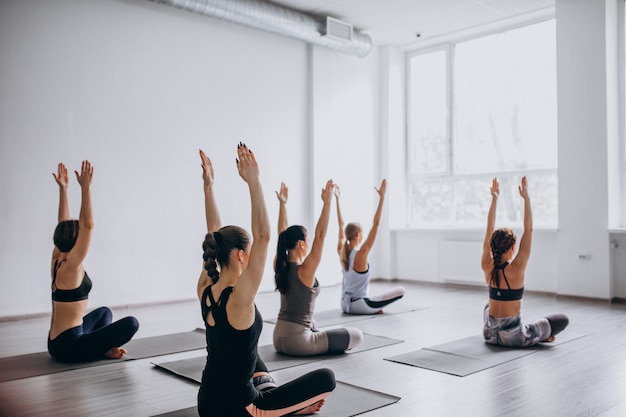
A yoga body isn’t just about being flexible; yoga can also boost your memory and improve your heart and bone health, says Anna Magee.
Brits are increasingly into yoga, spending around £790 million a year on classes and gear. Although new and quirky styles of yoga keep emerging—like paddle-board or dog yoga—the real benefits are being scientifically proven. For instance, UCLA researchers discovered that a three-month yoga and meditation program was more effective than memory exercises in reducing age-related brain issues. Another study showed that it improved sleep among breast cancer survivors.
When Lucy Edge, a former advertising executive, faced a deep depression, she chose yoga over prescribed antidepressants. She took a six-month break, went to India to study yoga, and found a sense of happiness she’d never known before. She has since written three books on yoga and created Yoga Meds, a section of her website Yogaclicks.com, which lists over 300 clinical trials showing yoga’s benefits for various conditions like arthritis, insomnia, and obesity.
If you’ve been using crossword puzzles and Sudoku for memory training, it might be time to try some yoga. The UCLA study involved brain scans and memory tests on 25 adults over 55 years old and compared memory exercises with a 12-week yoga and meditation program. The yoga group not only showed better improvements in spatial and visual memory but also less depression and anxiety and greater resilience to stress.
To mimic these benefits, you don’t need hours of headstands. In the study, participants did one hour of gentle Kundalini yoga each week, focusing on breathing, meditation, and some mantra chanting. They also did a daily 20-minute Kirtan Kriya meditation involving chanting, hand movements, and light visualization.
While walking or jogging is often recommended for heart health, yoga might be equally effective. A review in the European Journal of Preventative Cardiology in 2014 showed that yoga could lower heart disease risk as much as conventional exercise like brisk walking. Yoga’s stress-reducing effects can lower blood pressure and heart rates, thereby helping to prevent heart disease.
Charlotte Watts, a yoga teacher, and expert in nutrition has designed stress-reducing yoga poses perfect for beginners, while Anna Ashby, a senior teacher at Triyoga Studios in London, recommends Restorative yoga for stress relief. Restorative yoga involves supported postures held for up to 12 minutes, giving your nervous system a break.
Sarah Shone, a physiotherapist and yoga teacher, saw such positive results with yoga for back pain that she incorporated yoga classes into the Primary Care Trust’s rehabilitation program, with 87% of participants reporting pain reduction. Yoga is especially beneficial for conditions like incontinence and can increase bone density due to its focus on pelvic floor muscles and weight-bearing exercises.
For beginners, it’s crucial to let your yoga teacher know about any health issues and start with gentle styles like Hatha or Iyengar. For specific conditions like back pain, you can see if you’re eligible for subsidized yoga classes through an exercise referral scheme.
The right yoga gear can make a big difference. When choosing a yoga mat, think about where it will be stored, how often you’ll carry it, and your height. A thicker mat can provide extra cushion for your joints, especially knees and wrists.
Healthista recommends the Elephant Cork Yoga mat from Valka Yoga. This eco-friendly mat made from organic cork and natural rubber is renewable and recyclable. It’s padded for joint comfort, antimicrobial, and odor-resistant—perfect for hot yoga. Plus, Valka Yoga plants a tree with each purchase.
To enhance your practice, consider a yoga block. The Valka yoga block, matching the elephant design of the mat, can help make difficult poses more accessible and improve stability.
Yoga is suitable for everyone, whether you’re flexible or not. Here’s a guide to different types of yoga:
– Yin or Restorative yoga is usually done under candlelight with support from blankets, cushions, and bolsters.
– Vinyasa Flow is energetic, linking postures to breath. Suitable for beginners with adaptable moves.
– Iyengar yoga focuses on precise posture alignment and uses props, holding poses for up to 20 breaths.
– Anusara yoga combines alignment with flowing movements often set to upbeat music.
– Yoga Therapy is a specialized type taught by instructors trained to help heal injuries or illnesses through yoga.
No matter your level of experience, the right yoga practice can offer significant physical and mental health benefits.